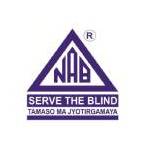Interactive Analysis of data, trends from year 1980 to 2019 by country on Rubella Vaccine coverage, unvaccinated population of women under child bearing age and Children born with disabilities
Timeline: Vaccine Coverage
-
For reference, MCV1 refers to Measles Containing Vaccine, and this means that antigens such as MMR, MR, MMRV, and Measles fall into this category.
-
RCV1 refers to Rubella Containing Vaccine, and this means that antigens such as MMR, MR, MMRV, and Rubella fall into this category.
-
MMR is a vaccine that contains Measles, Mumps, and Rubella. MR is a vaccine that contains only Measles and Rubella. MMRV is a vaccine that contains the MMR vaccine plus the Varicella vaccine. Measles or rubella vaccines alone only contain the named vaccine.
Business Case by Country
-
Red bar meaning: No Catchup Cost
-
This is the worst case scenario for a country, in which vaccination rates are maintained at the current 2019 level, but no supplementary immunization activity (SIA) is implemented
-
-
Green bar meaning: Best Case Catchup Cost
-
This is the best case scenario for a country. Vaccination rates increase to 100%, and a supplementary immunization activity is implemented only for women of childbearing age or younger who have not received a rubella vaccine yet.
-
-
Yellow bar meaning: Worst Case Catchup Cost
-
This is the case that is in between the No Catchup case and the Best Case Catchup. We call this the “worst case catchup” because unlike the best case catchup, where we only provide SIAs for women who have NOT received a rubella vaccine, we provide SIAs for all women of childbearing age. This is what the WHO recommends. In reality, this is infeasible and unlikely to happen. However, we provide this cost to show that this is the absolute worst case scenario for implementing SIAs in a given nation.
-
Vaccination rates also increase to 100% here.
-
Goal: To have a nation’s green bar be the lowest compared to the other two bars.
-
Example: India Business Case
-
In 5 years as of 2019, it will be cheaper for India to continue to maintain its current vaccination rates and to not implement an SIA than to implement the Best Case Catchup scenario ($2.4 billion vs. $3 billion).
-
However, in 10 years, India saves more money by implementing an SIA and increasing vaccination rates to 100% rather than not doing anything ($4.75 billion vs. $3.5 billion).
-
Therefore, India should implement an SIA and raise vaccination rates to the highest possible immediately in order to reap financial benefits and save lives.
-
-
-

































